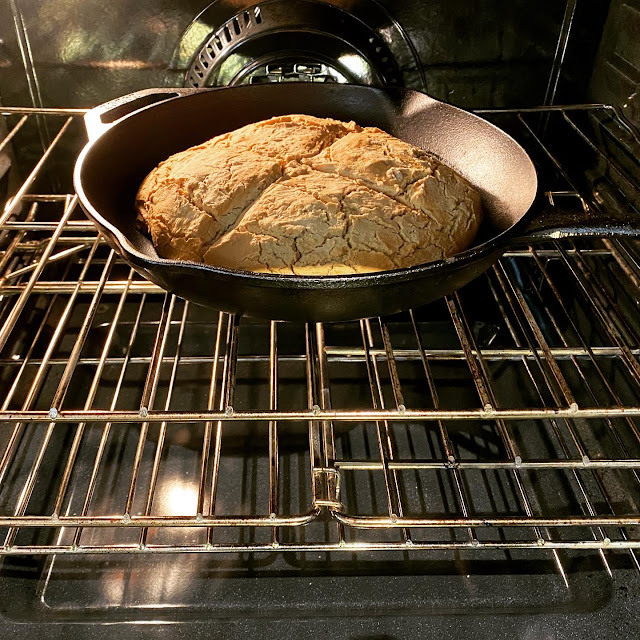As a vegan, I eat an abundance of chickpeas. Honestly, they are a staple in my vegan diet. I throw them in soup, add them to bruschetta, toss a handful into a salad, etc. The possibilities are endless as chickpeas are the chicken of vegan proteins. And, all you have to do is pop open a can, drain, and rinse them.
But, did you know that liquid you drain off from the chickpeas is actually vegan baking liquid GOLD? Called aquafaba, you can stir a bit into a hummus recipe for an extra fluffy and creamy texture. But, it also works as an amazing egg replacement for baking.
I may love baking, and have jumped on the quarantine baking trend with some other baked items, including this cake, these scones, and this loaf bread, but the thought of using yeast and committing to feeding a sourdough starter is daunting. I mean, I can barely keep succulents alive. Nursing a sourdough starter for a week is really out of the question.
This bread could not be easier. Mix the wet ingredients, mix
the dry ingredients, combine, let sit, brush with vegan butter, and bake.
Dense, soft, and almost melt-in-your-mouth in texture, this is a bread you can
and should make year-round, though I will certainly remake it next March. Best
of all, it only takes about half the aquafaba from a single can of chickpeas,
so with the rest, you can make these blondies!
Vegan Irish Soda Bread
Ingredients
- 3 - 3 1/2 cups gluten-free all purpose flour (I used Bob’s Red Mill and started with only 3 cups)
- 2 tsp baking powder
- 1 tsp baking soda
- 2 tsp cornstarch
- 1/2 tsp salt
- 1 1/2 cups nondairy milk (I used almond milk)
- 2 tsp apple cider vinegar
- 3 tbsp vegan butter (melted)
- 3 tbsp aquafaba (chickpea brine)
Method
Preheat the oven to 400 degrees Fahrenheit.
In a medium bowl, whisk the wet ingredients including the nondairy milk, apple cider vinegar, melted vegan butter, and aquafaba. Mix well.
In a large bowl, mix the dry ingredients including the gf flour, baking powder, baking soda, cornstarch, and salt. I started with 3 1/2 cups flour.
Pour the wet ingredients into the dry ingredients, mixing with a spatula, to form a shaggy dough. The texture of a shaggy dough is lumpy yet well mixed without any dry spots of flour. It should be a cohesive ball, but not a smooth one. Add an additional 1/2 cup of flour if the dough is too wet.
Let the dough stand 15 minutes.
Coat a cast iron skillet with melted butter. Flour your hands and lift the dough. Form it into a ball as best as you can, and place it into the skillet. Using a sharp knife, score a deep cross across the top.
Brush some additional melted butter over the top of the bread. Place the skillet in the oven and bake 50 minutes or until the bread has a fairly firm browned crust on top.
Turn the bread onto a cooling rack. Cool for at least half an hour, then slice and serve.



